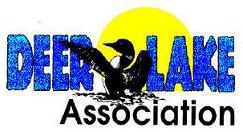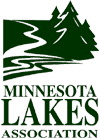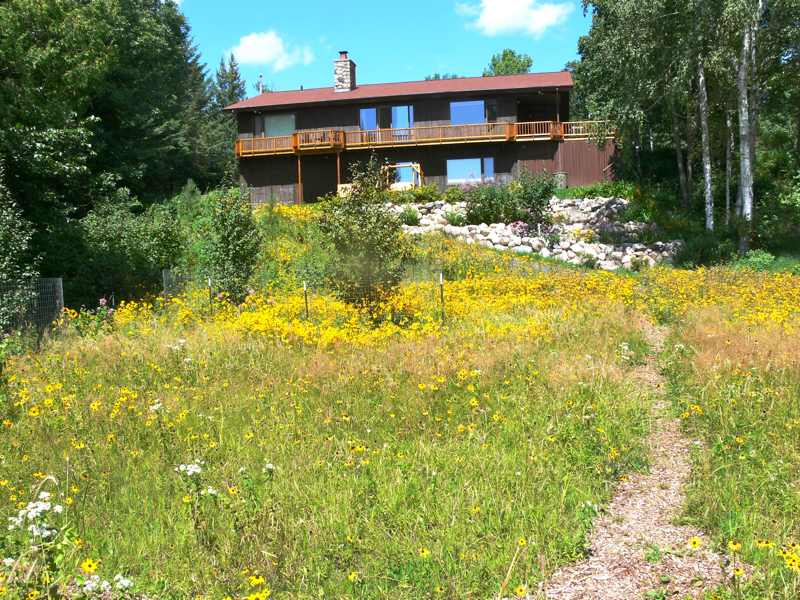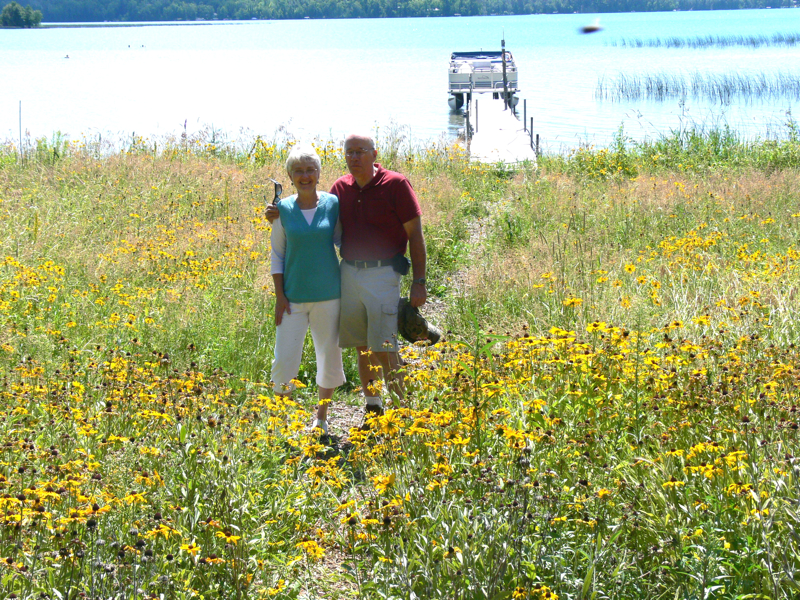

Deer Lake Association
A member of the Minnesota Lakes Association
| Spotlight |
|---|
|
|
Announcing a Deer Lake Shoreland Stewardship Award Winner!!

Dick and Beth Wyman on East Thorpe

The Shoreland Stewardship Award was established by the Itasca County Coalition of Lake Associations (I-COLA) in 2005, and annually recognizes Itasca County Shoreland property owners who are practicing good natural resource conservation practices on our counties lakes, rivers and streams. I-COLA funds the program, and it’s administered by a committee comprised of I-COLA members and Itasca County Soil and Water Conservation District staff (SWCD).
The purpose of the program is not only to recognize shoreland owners for their natural resources conservation efforts, but to promote the importance of maintaining the good water quality Itasca County is blessed with, and is so important to our way of life and economy.
Project examples include buffers of native vegetation between the mowed lawn and waters’ edge, measures taken to prevent bank loss and sedimentation due to wave/wake action erosion, stormwater runoff management to limit rainwater discharge directly to a lake/river/stream (such as rain-gardens), and re-establishing or maintaining aquatic vegetation for wildlife habitat and/or lessoning wave/wake action erosion.
Top award recipients will receive framed nature prints, while other finalists will receive certificates of recognition. Finalist projects, and the concept of shoreland stewardship, will be showcased at the county fair, in news releases to local papers, in a presentation to the county board of commissioners, and therefore, on the local television station.
If you value the good water quality and fish and wildlife habitat Itasca County Lakes provide, please help promote the concept of good shoreland stewardship. This can be done by nominating yourself or someone you know, who is practicing conservation on our shorelines. Applications for the 2008 award will be taken until October 1st, 2008, and can be obtained from the Itasca County Soil and Water Conservation District office (SWCD). Forms are available online, at www.itascaswcd.org, or by calling or stopping in - ask for Andy: 1889 E Hwy 2-Grand Rapids (just west of Sandstroms Distribution, on the north side of highway 2) or 218-326-0017.
***********
Itasca County Shoreland Revegetation Workshop Series
Grant recipients can be reimbursed for up to 75 percent of the total project costs. Applicants must be able to fund at least 25 percent of the total project costs from non-state sources. Matching funds may be cash, volunteer labor, and in-kind contributions of materials, equipment and services.
"This is an opportunity for homeowners, local communities and conservation organizations to help enhance native shoreline vegetation and fish habitat in their local lakes, streams and rivers," said John Hiebert, DNR shoreland habitat coordinator. Last year, 26 projects were funded for $296,000.
Applications for grants, are available on the Minnesota DNR Web site at:
or by calling the DNR at (651) 296-6157 or toll free 1-888-MINNDNR (646-6367). Applications are due Sept. 18.
Successful applicants will be notified in January. Funds will be made available to successful applicants after July 1, 2007.
The grants are funded from state lottery proceeds deposited in the heritage enhancement account. Grants, administered through the DNR Division of Fisheries and Wildlife, are designed with guidance from local DNR fisheries managers.
The Minnesota Department of Natural Resources (DNR) is making more than $300,000 available for grant proposals for restoring native shoreline vegetation across the state.
| The ICOLA Shoreland Stewardship Contest is meant to encourage lake shore owners and residents to protect our most important resource (and the reason you own the land you do): the water quality of our lakes and streams. In the past many lake residents have taken the lake itself for granted, without thought as to how their own development along the shore can impact the natural environment. To improve the view of the water from the shoreland, landowners have often cleared the land of trees, shrubs and native grasses. An expanded and manicured lawn might be installed. Sometimes fertilization, use of herbicides and irrigation have been necessary to maintain that rich carpet of green by the lake, the ice-ridge lost to the need for easy access to the dock and the expanse of an ever widening beach. And in the lake itself aquatic plants such as bulrush, cat-tails, and water lilies that are an essential part of habitat for fish and wildlife have all been removed (sometimes with chemicals or mechanical devices) in order to clear the way for a pristine water front for unencumbered swimming and boating. In other words, a suburban aesthetic has been transplanted onto the natural beauty of our forested lake-country, and our immediate recreational desires have trumped the many protections that nature herself has provided for its various ecosystems, land and water. The results have been a precipitous drop in the clarity and quality of water in the lakes. And this translates into impaired habitat for both fish and fowl. Whereas failing septic systems and a host of other short-sighted zoning decisions certainly contribute to this decline, restoring the shoreland to its natural state can be the most effective means a lake shore owner has to protect our lakes for future generations. “Shoreland” means land that is located within 1,000 feet from the ordinary high water level of a lake. While any alterations in land use in the shoreland district can impact water quality and habitat, the most critical part of the shoreland is the first 50 feet back from the lake’s edge. Inevitably it slopes downward bringing runoff into the lake. It is crucial that the debris of mud and sand, residual fertilizer and pesticide chemicals or even septic seepage (in the ground at this lower elevation) be stopped and filtered before it runs directly into the lake. A buffer strip of native grasses, shrubs and trees up to 50 feet back from the water would be ideal, but anything you can do would help. The ice hump itself stops a great deal of this runoff, creating a basin for the water to soak through the land so that it reaches the lake and water table in a filtered state. Sometimes good shoreland stewardship is the easiest course we can take: just do nothing. Stop clearing for a view (you’ll gain in privacy); stop mowing by the shore (you’ll gain the company of wildlife and reduce fecal waste from grazing geese that are attracted to mowed lawns); leave the aquatic plants in the lake (you’ll see the fish dart about before you hook them). All this can regain the appropriate natural beauty of our rural lake country from the encroachments of suburbia. In other cases you might want to consider restoration of the shoreland buffer, by planting native plants. Sometimes further landscaping is called for, be it terracing or even “rip-rap” along the shore. By no means does good shoreland stewardship preclude your access and enjoyment of the lake. But paths can be made serpentine rather than straight to the lake, and you can step up and over the ice ridge to get to the dock and beach rather than directly through. Every shoreland situation is different, and thus various strategies for creating a buffer can be employed. The ICOLA Shoreland Stewardship Contest is a contest in name only. Everyone is a winner who takes steps to protect the natural resources for the future. Yet, we want to recognize those of you who have done the right thing; we want to publicize the good examples to encourage others in the endeavor. Please do what you can with your lakeshore and let us know about it! Technical assistance, workshops, and even native plants for sale can be found on many of the websites listed in our links section. In particular see those of the Itasca Soil and Water Conservation District, the Minnesota Department of Natural Resources, and the U of M Extension Service. |
|
|